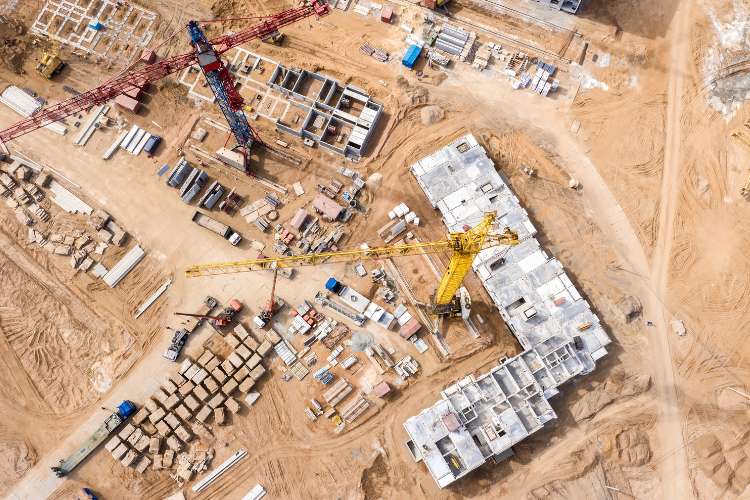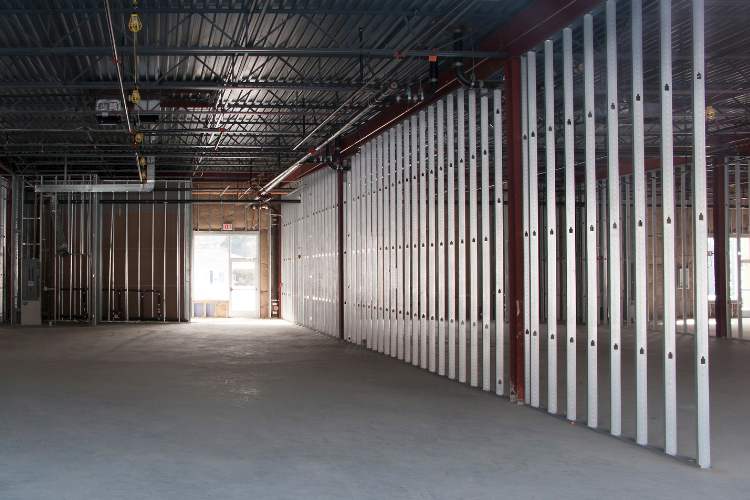In 2022, we launched the first of its kind, the Billd Roundtable, a video series that brought together a GC, a subcontractor, and a supplier to discuss the real issues that matter to construction professionals. The three episodes featured Russ Briscoe, VP of Sales of Billd, mediating discussions between Jason Beiter, VP of JE Dunn Construction, who offered a GC perspective, Ryan McClaggen, Executive Vice President at Texas AirSystems, who gave a supplier perspective, and Mike Irwin, President at SI Mechanical, who gave a subcontractor perspective. In this article, I’ll offer my own perspective on episode 2, which covered the broken repayment chain, and outline the conditions that unfairly skew more risk toward subcontractors.
Table of Contents
Risk #1: Floating Thousands in Project Costs While Waiting for Delayed Payments
I listened intently as each of the unique players in the industry started discussing how the broken payment chain affects GCs, subs and suppliers differently. What they said only affirmed what I already knew to be true: no matter the effects on GC and supplier, subcontractors risk the most from slow payments impacting their industry relationships, and here’s why. If subs don’t get paid by the GC on time, they can’t pay their vendors on time. So when they have a slow-paying GC, it strains their relationship with the supplier. Our sub spoke to that, and I couldn’t agree more.
There’s more at stake for a sub who loses a supplier, than for a supplier who loses a customer. Customers (subcontractors) are easier to source than vendors, especially when materials are in high demand. But, more importantly, if the sub loses that supplier, their other jobs might be affected by it – whether they’re using the supplier on multiple jobs or if there is a limited pool of vendors that meet their needs. In essence, as a supplier, when you lose a sub as a customer, it’s a momentary loss that can be recouped elsewhere. By contrast, as a sub, if you lose a supplier as a vendor, you’re jeopardizing other jobs, which in turn jeopardizes your GC relationships
To complicate matters further, those GCs are also unaware of how crucial every day is when it comes to payment. When our GC threw out a “30-60 day” payment timeline, I paused to think about the implications of those 2 wildly different timeframes. GCs might say they pay their subcontractors within “30-60 days,” but 30- and 60-day timelines have extremely different consequences for the sub, their cash flow and their ability to pay their vendors. I can’t stress enough that 30- and 60-day timelines are not created equal, and should not be casually grouped together as if they do.
Here’s an example of those timelines in action, as explained by Mike Irwin, the subcontractor on the series. As I alluded to earlier, when a sub has one slow-paying project, the supplier might put them on hold for a completely unrelated project. Here’s the unpacking of that scenario, because it’s worth exploring:
- Let’s say a sub gets paid in 30 days by GC #1 on Project #1, he comfortably pays the supplier for the materials on that project.
- If he gets paid in 30 days by GC #2 on Project #2, he also pays the supplier for the materials on that project.
- If, however, GC #3 takes 60 days to pay the sub for Project #3, then the sub can’t pay the supplier on time for the materials on Project #3.
- Because of the slow payment on Project #3, the supplier might withhold additional materials the sub needs for Project #2. As a result, Project #2, which was currently hitting timelines, will now run into material delivery issues and may go off track, all because of Project #3’s slow payment.
Essentially, Mike Irwin is saying the consequences of slow payment timelines can seep into projects they weren’t even a part of. This can throw the sub’s reputation and project performance into question with a GC who was paying them on time. This is why I want to draw attention that 30- and 60-day timelines aren’t created equal. In this scenario, 60 is simply too late and unsustainable for subcontractors to handle (not to mention, unfair).
To that point, for every 30 day period without payment, you see a quick accrual of compounding negative cash flow. Here’s what that looks like:
-
- Assume you’re a $12M/year subcontractor, with $1M/month in revenue
- Month 1:
- You have $800k/month in expenses
- You bill $1M at the end of the month, but know you won’t get paid for at least 30 days
- Month 1:
- Assume you’re a $12M/year subcontractor, with $1M/month in revenue
- Month 2:
-
-
-
- You have $800k in expenses again – You’re now $1.6M in the hole
- End of Month 2, you expect the $1M you billed in Month 1 to come in, but it doesn’t, because the GC is opting to take 60 days instead of 30
- You bill another $1M
-
-
- Month 3:
-
-
- You have $800k in expenses again – You’re now $2.4M in the hole
- You’re still waiting to see if the first $1M you billed will come in, floating $2.4M in the meantime
-
I can’t stress enough that the subcontractor is in a financially perilous position while waiting for what they billed to come in. You might argue that the sub needed to start with a $1.6M cash cushion to lean on while they wait for payment. But accumulating $1.6M in cash takes time to build in the highly capital intensive and tight margined construction industry. All of this strain originates from the fact that GCs at large are being too casual about when they pay the subcontractor — 30 days, 60 days or maybe more.
Jason Beiter, the GC in the Roundtable discussion, asserted that he understands that cash is king, and that he doesn’t want his trade partners to be strained. I truly appreciate this acknowledgement, but from everything I see in this industry, I sense it’s the standard talk track GCs use without any real action behind it. In a perfect world, the sub wouldn’t have to float all of this cash, straining their resources just to do business. I want to see GCs take a no-nonsense approach with property owners, and be straightforward about the consequences of lagging on payment. When it becomes nearly impossible for the sub to perform on the project, they should have the ability to shut the entire project down, so that property owners understand the gravity of slow payment.
Our GC also suggested that subcontractor cash flow struggles may be unique to small businesses, but that couldn’t be farther from reality. This isn’t just an issue for small, cash-strapped subs. We see this daily with subs at all levels of revenue. These circumstances aren’t size-dependent, and even if larger subs have more resources to cushion and withstand the strain, they’re also less inclined to show financial weakness to the GC if and when they do experience it. Ultimately, for every 30-day delay, subs large and small are going to have a harder time paying their suppliers and maintaining good relationships with them. It not only puts enormous pressure on the sub, but they have no choice in the matter.
The Negative Trickle Down Effect on Other Trades
Another impact of slow payment is when a sub is forced to stop working because of payment delays, it can affect subs across multiple trades, slowing down the entire project. Construction is an interconnected industry, one trade builds upon the work of another. The painting subcontractor can’t do their project if the drywall subcontractor hasn’t completed theirs. The electrical sub has to wait for a number of other trades to get their work done first. If the GC lacks a sense of urgency to get the sub paid and keep things moving, it can slow down the progress of all the other subs. The impact of this only increases the larger the project (which involves more subs who need to stay on schedule), which again points to why larger subcontractors are not immune to this
Risk # 2: Projecting What to Bill For
The conversation turned to the pay app process and progress payments, but as Jason Beiter, our GC pointed out, that gets complicated when you consider how pay apps are tallied. Over a third of the sub’s work is projected, and that practice has major impacts on the sub. When a sub goes to submit a pay app for the month (let’s say it’s due on the 20th) the sub has to project how much work will be done by the end of the month before they’ve completed that work. Projecting is the art of asking yourself, “How far along am I and how far along do I expect to be at the end of the month?”
The amount of time they have to project for is even longer than you may think, because the sub still has to gather the information for the pay app before the due date on the 20th. That only increases the number of days they have to speculate how much work will get done. If the sub gets aggressive about billing as much as possible, they may get pushback from the GC. In essence, they’re trying to figure out how much they can bill for without pushback.
Unforeseen factors may affect how the sub chooses to bill for the 10+ projected days. There might be heavy rain in the forecast, prompting them to bill lower. They might expect clear skies and no internal delays, and bill accordingly, expecting to fully deliver on what they’re billing. They may even think they’re overbilling. The thing is, the sub is just guessing. I know that the sub may worry that they’ll appear greedy to the GC if they bill too high, but the fact is, the sub has to pay for the labor and materials no matter what.
They’re put in a difficult position of wondering whether they can bill for something they’ve already bought and incurred expense for. But the nature of projection prevents them from knowing they can concretely bill for what they bought (in a timely manner). You can’t wait around to find out how much you can bill, then buy your material. It just doesn’t work like that.
This is yet another painful position for the sub to be in. For that reason, I believe that there needs to be more transparency and understanding around this process. Subs aren’t being greedy, they’re just trying to get their invoices approved for work or material they’ve had to come out of pocket for. Compounded with the loose promise of “30-60 days” for payment and all of this risk for the sub adds up.
Risk #3: Subs Do a More Complex project, With More Real-World Value, and Less Real-World Payment
Hands down, a subcontractor’s job is inherently more complex than almost anyone else on a project. They have to purchase materials from a supplier, review a stack of construction documents (and fill out another stack’s worth), then handle the logistics of installation. That sub can deliver excellent quality, create a great deal of real-world, physical value, but the GC is going to make certain that the sub doesn’t get paid unless everything is executed correctly. As a result, all the value the sub is creating with their work doesn’t match the dollar value being dispensed from the GC as the project wears on.
Risk #4: Access to Traditional Financing Resources Depends on Business Size
Ryan, our supplier, hit on a point about how the cash flow strain that subs experience because of the broken repayment chain can be a major inhibitor to business growth by constraining capital available for growth. But that brokenness has become too widely accepted. When the group was asked whether the system is truly broken, they agreed that it is, but that it’s hard to consider something broken when that’s “the way it’s always been”. That makes change a challenge when the parties at the top of the payment chain don’t see a reason to change.
Our GC did say that he’s willing to step in sometimes and “play banker” if it means helping smaller subs out, and that he’s happy to communicate to the project owner how important on-time payment is. But, again, this is a problem for subs of all sizes. Smaller subs in particular may feel this pinch more, but it’s also proportional to the size of the sub. The larger the sub, the larger the dollar amounts causing cash flow strain – not to mention they’ll be more reserved in how they communicate it to the GC.
It’s true that larger subs have the advantage when it comes to traditional bankability. On account of their size, they’ll have access to better financial resources like bank loans and lines of credit. Billd exists in part to level the playing field and provide high quality financial support to subs of all sizes.
Subs Need Greater Advocacy
As an advocate for subcontractors, I want to see positive change in construction payment practices. I think that means GCs need to have a plan to drive urgency with property owners, if payment doesn’t go out in time to make day 30. Beyond driving urgency, it truly comes down to education: educating all parties including property owners and reinforcing the standards that will protect subs. Educating clients on the consequences of the slow-pay habit will help them understand why they need to come together to uphold better standards.
Subs generally confront more obstacles to payment and project delivery than anyone else on the project site. The conversation in Billd’s latest Roundtable highlights the depth of risk that subs deal with. They need advocacy and they need resources. That’s why I’m proud to say that at Billd, we’re on a mission to provide them.









